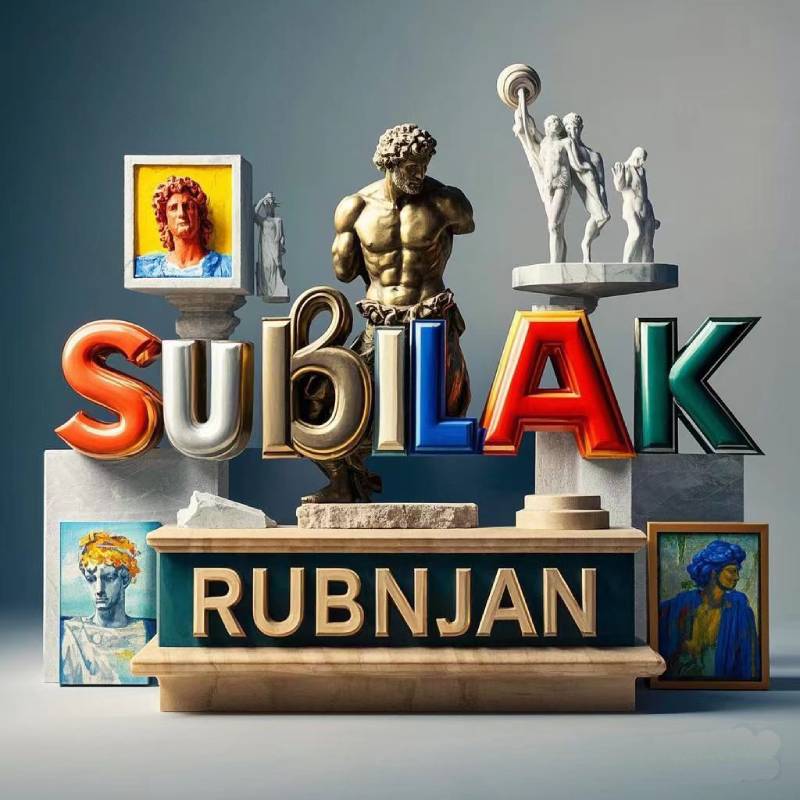As an ancient and exquisite art form, the production process of copper sculpture combines metal casting, hand forging and artistic creation. The following is an in-depth analysis of the entire production process and technical details of copper sculpture from traditional techniques to modern innovation:
I. Core process flow
- Artistic conception and design
3D modeling: Traditional clay drafts need to be controlled in three-dimensional proportions at the same time, and modern 3D scanning modeling is combined to optimize the structure, and mechanical stability is verified by finite element analysis.
Dynamic simulation: Simulate the center of gravity of large dynamic sculptures (such as running horses and flying birds) to avoid structural imbalance after casting.
- Material science
Alloy ratio: Artistic bronze (85%Cu+12%Sn+3%Zn) takes into account ductility and hardness, and outdoor sculptures add 0.5% phosphorus to improve corrosion resistance.
Plate selection: Forging copper plate (TU1/TU2) purity ≥99.9%, thickness error must be controlled within ±0.1mm.
- Precision casting process
Upgrade of lost wax method:
Silica sol precision casting: The mold shell reaches 7-9 layers, the minimum wall thickness is 0.3mm, and the hair-level details can be presented.
Vacuum negative pressure casting: used for ultra-thin parts (<2mm), reducing bubble defects.
Sand casting innovation:
3D printing sand mold: resolution 0.28mm, complex inner cavity molding in one time, saving 70% of mold making time. - Forging process breakthrough
CNC forging: Seven-axis robotic arm cooperates with infrared temperature control system to achieve 800-900℃ precise hot forging, with an error of ±5℃.
Cold work hardening: Through more than 30% deformation processing, the strength of copper is increased from 200MPa to 400MPa. - Surface treatment technology
Nano protection: Atomic layer deposition (ALD) is coated with 5nm aluminum oxide film, and the resistance to sulfide corrosion is increased by 10 times.
Intelligent coating:
Electrochemical deposition: Control voltage 0.8-1.2V, accurately generate Cu2O (red) or CuO (black).
Laser oxidation: 1064nm fiber laser generates gradient iridescent oxide layer. - Analysis of key technical difficulties
- Large sculpture project
- Split casting: Sculptures over 10 meters adopt modular design, and 0.5% thermal expansion gap is reserved at the joints.
Stress relief: Annealing process curve control, 600℃ insulation for 2h, then drop 50℃ to room temperature every hour.
- Ultra-thin casting
Centrifugal casting: speed 800-1200rpm, metal liquid superheat controlled at 100-150℃.
Lost foam casting: EPS foam mold combustion residual carbon content <0.03%, avoid casting pores. - Precision welding
TIG welding: 2% thoriated tungsten electrode, argon purity 99.999%, flow rate 15-20L/min.
Laser welding: peak power 3kW, pulse width 5ms, melting depth up to 4mm, heat affected zone <0.5mm.
III. Modern technology integration
- Digital twin system
Real-time monitoring of the casting process through the MES system, sensors collect 200+ parameters, and AI predicts the probability of defects. - Additive manufacturing
Selective laser melting (SLM) molded bronze parts, density up to 99.5%, surface roughness Ra6.3μm. - Intelligent detection
Industrial CT scanning accuracy 5μm, can detect 0.02mm³ shrinkage holes, phased array ultrasonic detection crack sensitivity 0.1mm.
IV. Quality evaluation system
- Artistic dimension
Surface continuity G3 level or above, light and shadow reflection uniformity error <5%. - Physical properties
Tensile strength ≥350MPa, Vickers hardness HV90-120, salt spray test >96h without matrix corrosion. - Chemical stability
Annual corrosion rate in outdoor environment <0.8μm, copper acetate accelerated corrosion test passes ISO 9227 standard.
V. Industry development trend
- Green casting
Bio-based resin sand mold, vacuum sealed molding (V method) reduces energy consumption by 40%. - Intelligent repair
Nano copper paste cold welding technology, repair accuracy of 0.01mm, strength recovery rate of 95%. - Dynamic sculpture
Integrated micro motor and shape memory alloy to achieve autonomous change of sculpture form.
Copper sculpture craftsmanship has shifted from being dominated by craftsman experience to digital precision manufacturing, but manual finishing still retains more than 30% of artistic added value. The future development direction will focus on the integrated innovation of materials, structure and function, and promote metal art into a new era of intelligent creation.

